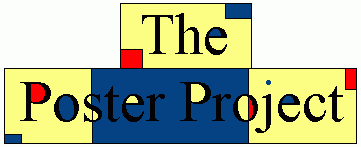
|
|

|
The Koch CurveStart out with a line segment:
Place an equilateral triangle on the middle third of the segment. (An equilateral triangle has all sides equal.)
Remove the bottom of the triangle to get what I'll call the second stage shape:
Now repeat the process on each line segment of the new shape, removing the middle third, and replacing it with two sides of an equilateral triangle, to get the third stage shape:
Keep doing this process, removing the middle third of each new line segment, and adding a triangular bump. The limiting shape which you get through this procedure (the shape that would result from doing this procedure infinitely many times) is called the Koch curve. [picture of Koch curve here] We can adapt the Koch curve to get a Koch snowflake: instead of starting with a line segement, start with an equilateral triangle, and perform the above procedure on each side of the triangle, to get a picture like this: [picture of Koch snowflake here] The Kock snowflake is an example of a shape with an infinite perimeter which bounds a finite area. Can you prove this? Here are some hints. The Koch curve is an example of a fractal. A fractal is a fun geometric shapes whose dimension is hard to pin down. A line segment, for example, is one-dimensional, a square is two-dimensional and a cube is three-dimensional. But what is the dimension of the Koch curve? It is a little bit more than 2, but not quite up to 3! Another common property of fractals is self-similarity: if you zoom in on any one part of the shape, you get the same shape repeated over and over, on a smaller and smaller scale. Here is a little project: try to find pictures of different fractals. Some famous ones you might want to look for are:
To help you search, here are some cool sites about fractals:

|